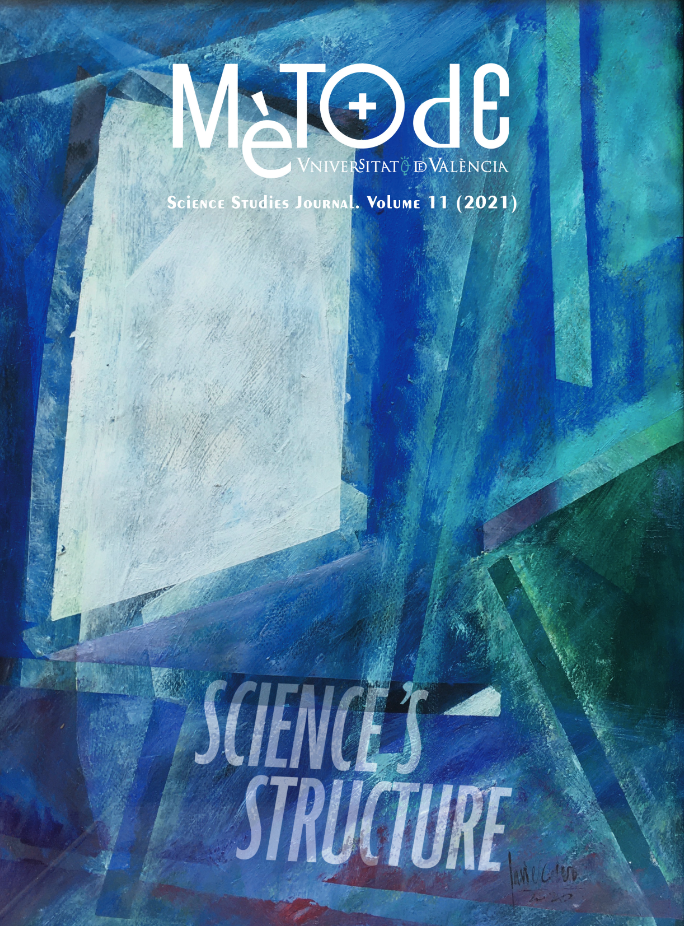Producing more food in a sustainable way is possible: Biotechnological and sustainable fertilisation as a way to face population growth
DOI:
https://doi.org/10.7203/metode.11.15576Keywords:
sustainable agriculture, root system, fertilisation, nitrogen, phosphate, microbiome Abstract
Abstract
The dramatic increase in the world’s population expected in this century will force a proportional increase in agricultural production in order to ensure the food supply. However, society is now demanding new, more sustainable, and environmentally friendly production methods. In order to achieve this sustainable increase, new biotechnological tools such as gene editing or synthetic biology will have to be used, leveraging the knowledge generated by researchers over decades. The soil microbiome is emerging as a powerful biotechnological tool. The beneficial microorganisms harboured in soils promote plant growth by supplying nutrients and producing hormones and secondary metabolites. Thus, these microorganisms will likely be able to help increase agricultural production in a sustainable way.
 Downloads
Downloads
 References
References
Delgado-Baquerizo, M., Oliverio, A. M., Brewer, T. E., Benavent-González, A., Eldridge, D. J., Bardgett, R. D., Maestre, F. T., Singh, B. K., & Fierer, N. (2018). A global atlas of the dominant bacteria found in soil. Science, 359(6373), 320–325. http://doi.org/10.1126/science.aap9516
FAO. (2017). El futuro de la alimentación y la agricultura: Tendencias alimentación y desafíos. Food and Agriculture Organitzation of the United Nations. http://www.fao.org/3/a-i6881s.pdf
Gao, C. (2018). The future of CRISPR technologies in agriculture. Nature Reviews Molecular Cell Biology, 19, 275–276. http://doi.org/10.1038/nrm.2018.2
Goldford, J. E., Hartman, H., Smith, T. F., & Segre, D. (2017). Remnants of an ancient metabolism without phosphate. Cell, 168(6), 953–955. http://doi.org/10.1016/j.cell.2017.02.001
Gómez, F., Cavalazzi, B., Rodríguez, N., Amils, R., Ori, G. G., Olsson-Francis, K., Escudero, C., Martínez, J. M., & Miruts, H. (2019). Ultra-small microorganisms in the polyextreme conditions of the Dallol volcano, Northern Afar, Ethiopia. Scientific Reports, 9(1), 7907. http://doi.org/10.1038/s41598-019-44440-8
Hiruma, K., Gerlach, N., Sacristán, S., Nakano, R. T., Hacquard, S., Kracher, B., Neumann, U., Ramírez, D., Bucher, M., O’Connell, R. J., & Schulze-Lefert, P. (2016). Root endophyte Colletotrichum tofieldiae confers plant fitness benefits that are phosphate status dependent. Cell, 165(2), 464–474. http://doi.org/10.1016/j.cell.2016.02.028
López-Torrejón, G., Jiménez-Vicente, E., Buesa, J. M., Hernandez, J. A., Verma, H. K., & Rubio, L. M. (2016). Expression of a functional oxygen-labile nitrogenase component in the mitochondrial matrix of aerobically grown yeast. Nature Communications, 7, 11426. http://doi.org/10.1038/ncomms11426
Mus, F., Crook, M. B., Garcia, K., Garcia Costas, A., Geddes, B. A., Kouri, E. D., Paramasivan, P., Ryu, M.-H., Oldroyd, G. E. D., Poole, P. S., Udvardi, M. K., Voigt, C. A., Ané, J.-M., & Peters, J. W. (2016). Symbiotic nitrogen fixation and the challenges to its extension to nonlegumes. Applied and Environmental Microbiology, 82(13), 3698–3710. http://doi.org/10.1128/AEM.01055-16
Ray, D. K., Mueller, N. D., West, P. C., & Foley, J. A. (2013). Yield trends are insufficient to double global crop production by 2050. PLOS ONE, 8(6), e66428. http://doi.org/10.1371/journal.pone.0066428
Roosevelt, F. D. (1938, May 20). Message to congress on phosphates for soil fertility. Published online by G. Peters & J. T. Woolley. The American Presidency Project; 1999-2011. UC Santa Barbara. https://www.presidency.ucsb.edu/node/208838
Roy, E. D., Richards, P. D., Martinelli, L. A., Coletta, L. D., Lins, S. R. M., Vazquez, F. F., Willig, E., Spera, S. A., VanWey, L. K., & Porder, S. (2016). The phosphorus cost of agricultural intensification in the tropics. Nature Plants, 2, 16043. http://doi.org/10.1038/nplants.2016.43
SARE. (2019). Management of nitrogen and phosphorus. https://www.sare.org/Learning-Center/Books/Building-Soils-for-Better-Crops-3rd-Edition/Text-Version/Management-of-Nitrogen-and-Phosphorus
Setten, L., Soto, G., Mozzicafreddo, M., Fox, A. R., Lisi, C., Cuccioloni, M., Angeletti, M., Pagano, E., Díaz-Paleo, A., & Ayub, N. D. (2013). Engineering Pseudomonas protegens Pf-5 for nitrogen fixation and its application to improve plant growth under nitrogen-deficient conditions. PLOS ONE, 8(5), e63666. http://doi.org/10.1371/journal.pone.0063666
Singh, B. K., & Trivedi, P. (2017). Microbiome and the future for food and nutrient security. Microbial Biotechnology, 10(1), 50–53. http://doi.org/10.1111/1751-7915.12592
Stokstad, E. (2016). The nitrogen fix. Science, 353(6305), 1225–1227. http://doi.org/10.1126/science.353.6305.1225
Van Hooijdink, R. (2018, December 20). 4 ways robotics will affect agriculture in 2019. Robotics Business Review. https://www.roboticsbusinessreview.com/agriculture/4-ways-robotics-change-agriculture-in-2019/
Walitang, D. I., Kim, K., Madhaiyan, M., Kim, Y. K., Kang, Y., & Sa, T. (2017). Characterizing endophytic competence and plant growth promotion of bacterial endophytes inhabiting the seed endosphere of rice. BMC Microbiology, 17(1), 209–209. http://doi.org/10.1186/s12866-017-1117-0
Downloads
Additional Files
Published
How to Cite
-
Abstract1204
-
Untitled (Español)3
-
PDF403
Issue
Section
License
Copyright (c) 2023 CC BY SA

This work is licensed under a Creative Commons Attribution-ShareAlike 4.0 International License.
![]()
All the documents in the OJS platform are open access and property of their respective authors.
Authors publishing in the journal agree to the following terms:
- Authors keep the rights and guarantee Metode Science Studies Journal the right to be the first publication of the document, licensed under a Creative Commons Attribution-NonCommercial-NoDerivatives 4.0 International License that allows others to share the work with an acknowledgement of authorship and publication in the journal.
- Authors are allowed and encouraged to spread their work through electronic means using personal or institutional websites (institutional open archives, personal websites or professional and academic networks profiles) once the text has been published.





